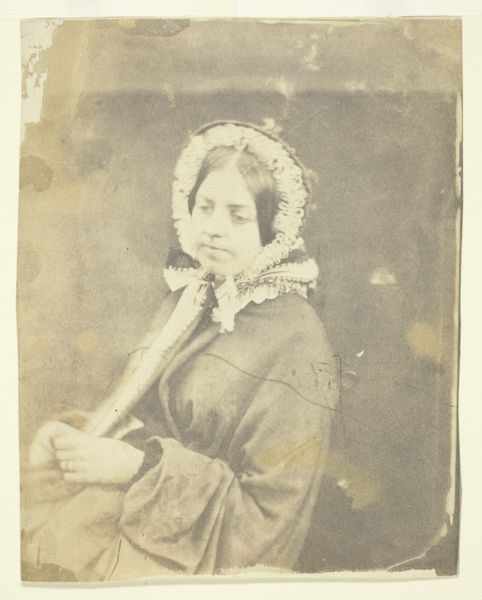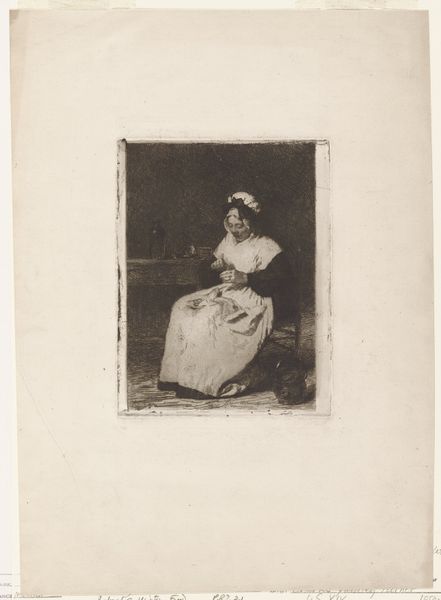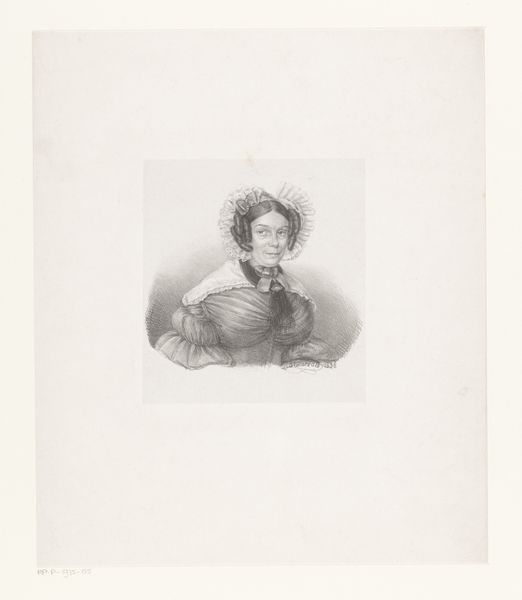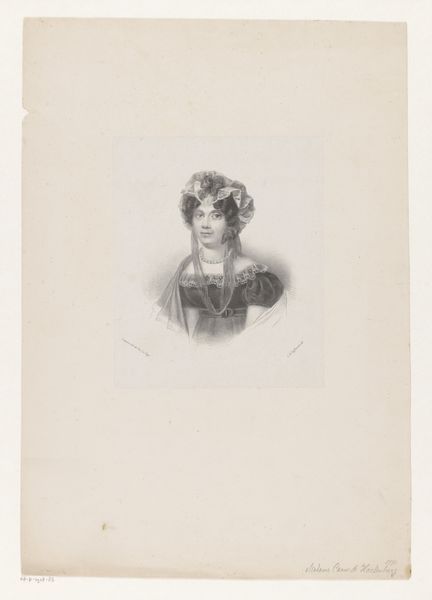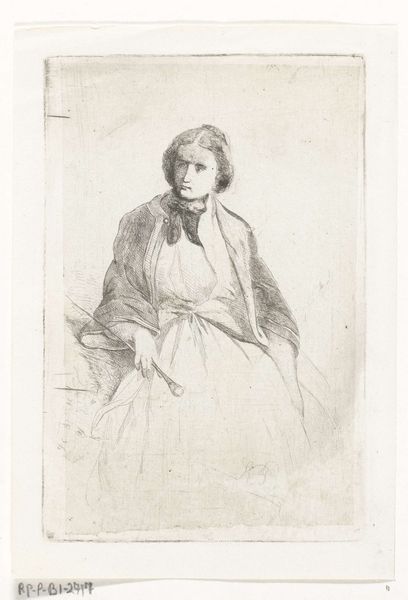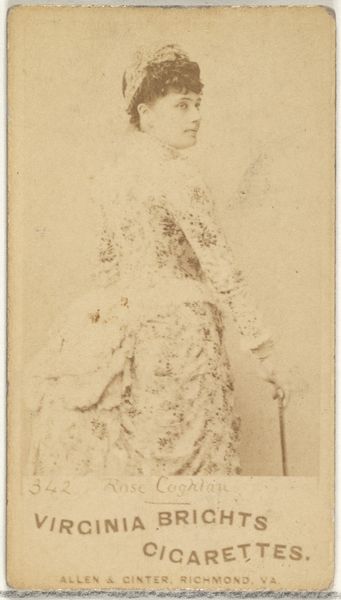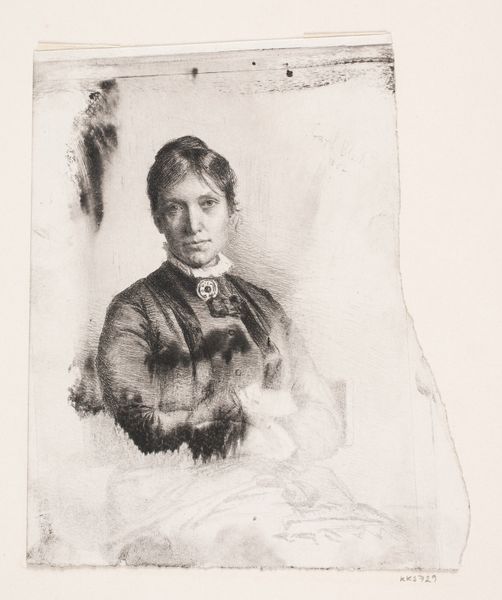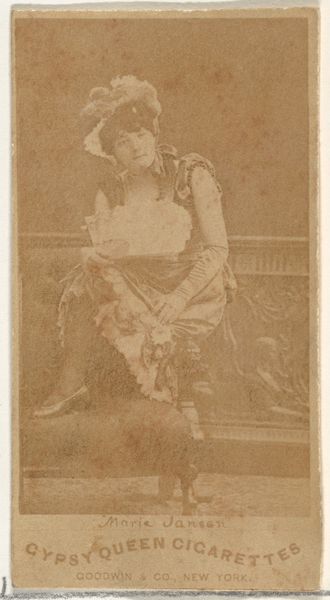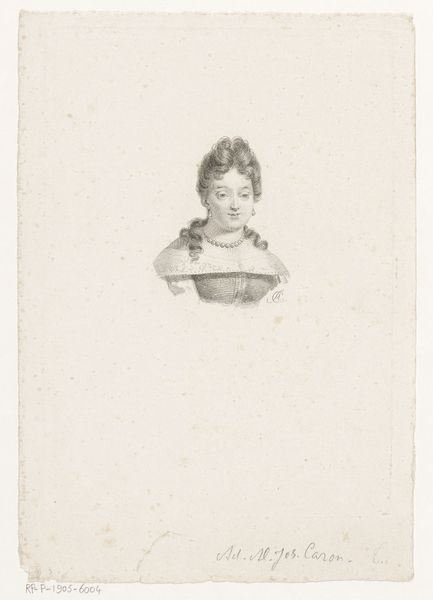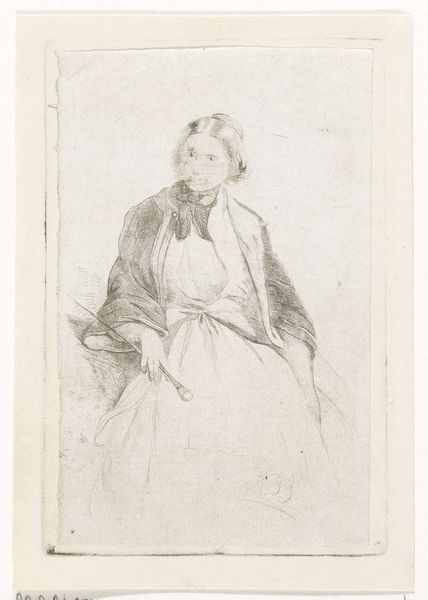
print, daguerreotype, paper, photography
#
portrait
#
16_19th-century
# print
#
daguerreotype
#
paper
#
photography
#
realism
Dimensions: 9.7 × 7.5 cm (image/paper)
Copyright: Public Domain
Editor: This is an 1850s daguerreotype titled "Mrs. Craik" printed on paper. There’s a quietness about it. It makes me wonder, what was it like to be a woman during the Victorian era? How do you interpret this work? Curator: This daguerreotype presents an opportunity to examine the representation of women in the 19th century. Photography was relatively new then, but its association with realism also made it an interesting tool to convey women’s images at the time. How does Mrs. Craik fit or challenge gender roles in that period? Editor: Well, the bonnet and demure pose certainly read as traditionally feminine, but there’s a strength in her gaze that seems to resist those expectations. It’s a compelling tension. Curator: Precisely. It speaks to the contradictions women faced then. How could she assert individuality within the strictures of Victorian society? Photography could be a means of negotiating identity, perhaps subtly subverting societal expectations. And considering the sitter’s social standing could offer insight into the complexities of Victorian ideals around domesticity and feminine virtue. Editor: That makes me think about how access to portraiture itself was limited by class and gender… Were images of working-class women readily accessible as well? Curator: A crucial point. Analyzing photographic portraits such as this encourages us to investigate power dynamics, consider who controls representation, and understand how those choices impact historical narratives about identity and agency. Editor: It's fascinating how a seemingly simple portrait can open up such complex questions about history, gender, and power. Curator: Indeed. It reinforces the importance of approaching art with an intersectional lens.
Comments
No comments
Be the first to comment and join the conversation on the ultimate creative platform.

